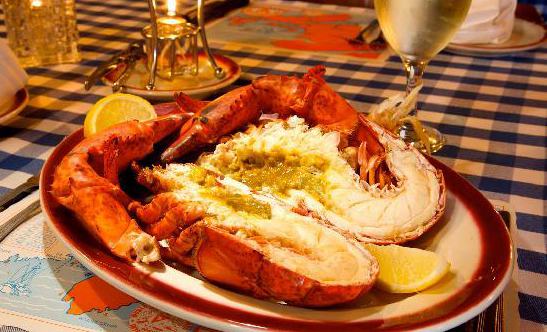


HALIFAX, Canada, Feb. 16-- Canada's Atlantic lobster, a maritime delicacy, is gradually becoming a popular dish, despite the high prices, on the table of the Chinese people, especially during the country's most important holiday, the Lunar New Year which falls on this Feb. 19.
Previously, the Chinese lobster market is mainly dominated by Australia's warm water soft-shell ones. Now the hard-shell lobsters from Canada's Atlantic Ocean, known as the "King of Seafood", manage to crawl their way onto the Chinese table, as seafood connoisseurs in the country regard Atlantic lobsters as " wild and not polluted."
Bureau of Statistics data showed that from 2010 to 2013, Canada 's live lobster exports to China rose from 7.67 million Canadian dollars to 41.75 million dollars, registering an annual growth rate of 113.79 percent. As of October 2014, this figure reached 56. 89 million Canadian dollars.
On a cold winter day in late January, Xinhua reporters adventured an incredible lobster harvesting journey by driving 1, 800 kilometers from Toronto to Lockeport, a fishing town in one of Canada's three Maritime provinces, Nova Scotia, to see how lobsters are harvested from the cold pristine water along the rugged north Atlantic coast, packaged live and shipped to Chinese people's dining table.
HARVESTING
"The lobster boat is ready, waiting on you," Michael Cotter, a lobster dealer from Lockeport's Cotter's Ocean Products Inc., greeted us, together with his partner Ernie White, a lobster fisherman, when seeing us walk toward their boat on an early morning.
As soon as we hurried on to the 100,000-ton boat, the engine was started and the boat headed slowly toward the open water, slicing through the chilly waves. The swaying and plunging of the vessel soon took its infamous toll, we were overwhelmed by seasickness, the smell of the sea and the fishy boat. We started to vomit, shivering meanwhile due to the bone-chilling cold, despite the bright sunshine.
Cotter, in his 50s, told us that you must obtain a license issued by the federal Department of Fisheries and Ocean in advance for lobster fishing. The number of trapping cages allowed for each license, which costs 500,000 Canadian dollars, is different, depending on the fishing areas, normally ranging between 200 and 300 traps. So far, only 6,000 licenses were issued in the past two decades.
White, whose family had been engaged in lobster fishery for generations in Lockeport, a historic port town, told us that the Canadian government has strict rules for lobster fishery in order to promote a sustained development of the aquatic industry. Each lobster must be carefully examined and measured to ensure that it has reached the legal size. Undersize and berried females (egg- bearing) are returned to the sea. This conservation practice dated back to the early 1870s.
Our boat slowed a bit as it neared Cotter's white buoy, drifting in waters 15 kilometers away from the shore and 40 meters deep. Each lobster fisher has uniquely colored buoys identifying their trap locations. The buoy-lines were secured by gaffe (long pole with a hook on the end) and secured to an electronic hauler. Cotter and White were getting busy. Winches began to whirl and the lobster traps were being pulled out of the water.
With rubber gloves on both hands, White quickly captured the lobsters in the trap and carefully examined their carapace length with a metal gauge to ensure that they were of legal size. He then started to put a tracking rubber ring with a digital code embedded on the lobsters for buyers to trace the lobsters.
"The rubber rings can also help prevent the lobsters from huddling together and fighting each other," he explained.
White said his salary was around 5,000 Canadian dollars a month in winter time, or 20 percent of each harvest. But he could earn 10,000 Canadian dollars a week in summer peak season.
Aside from some advances in boat and gear technology, little has changed in the past 150 years in the way of lobster fishing, which involves hours of intensive labor at sea. The uncertainty of the weather and the catch could be frustrated.
When we asked him this question, White said: "Yes, it's uncertain. Each time when I go out fishing, I don't know what I can get. But everyday is a new day. My dream is to buy my own boat. " He said that a new lobster fishing boat would cost 100,000 Canadian dollars, even a second-hand one, 50,000 Canadian dollars.
Lobster fishermen, who are at the low-end of the industry, now plan to raise and unify the purchasing prices of lobsters, which have remained almost the same for the past years despite the fact of the rapidly increasing demand.
"It's of course a good news that more and more buyers come from China," White said to us, "I know Feb. 19 is China's Spring Festival (the Lunar New Year) this year."
Considering our serious seasickness, Cotter and White decided to retrieve only 10-20 lobster traps this time, replace baits with fish heads and then return to shore.
On the way back, White was quietly looking at the fading horizon, and his beard glinted in the sunshine. His image was reminding us Hemingway's Old Man and the Sea.
PACKAGED LIVE, SHIPPED TO CHINESE TABLE
"Look at the Chinese flag, raised especially for you," Francis Morrissey, manager of the Royal Star Foods in Tignish, a fishing community in western Prince County, welcomed us at the northwestern tip of Prince Edward Island.
Founded 94 years ago, the company, owned by 185 fishermen, is one of the largest Atlantic lobster processors on the island.
"We used to do more ships into the U.S. and Europe than to China, but live lobster export to China has quadrupled in the last three years," he said, adding "I see a great future, because the Asian countries including China have developed a taste for lobster. "
Ron Mackinley, Minister of Fisheries, Aquaculture and Rural Development of Prince Edward Island, said: "When I became the minister in 2011, I have noticed there was a market I wanted to break into, and that was China."
"Chinese people are now eating more lobsters. A good natural product from the sea to your table. A win-win situation," he said.
It reportedly takes seven to eight years for a lobster to grow one pound. Its size will be doubling every time when it molts in one and a half years. Scientists believe that lobsters do not get old and they are not prone to aging organ failure. The largest lobster ever caught reportedly was about 65 years old and weighed 44 pounds.
Once considered as a poor man's food, it was not until the second half of the 19th century that the lobster industry began to flourish in Canada, providing now more than half of the world's supply for live and processed Atlantic lobsters.
Canada has 41 Atlantic lobster fishing areas covering five eastern provinces, including Quebec, Prince Edward Island, Nova Scotia, New Brunswick, Newfoundland and Labrador.
Official statistics showed that in 2012, Canada exported 4.1 billion Canadian dollars of fish and seafood products, with lobster, the country's top export species in terms of value, standing at 1 billion Canadian dollars.
Liu Yun, a Chinese-Canadian woman in Halifax, the capital of Nova Scotia, described the emergence of the Chinese market, now the No. 2 largest lobster market for Canada following the United States, as "unbelievable" and "unimaginable."
Liu, the sales director of the World Link Food Distributors Inc. , said lobster sales used to slump after Christmas and in January. Now if fishermen could not sell their lobsters at a good price before Christmas, they started to aim at the Chinese New Year market.
She said that "The air freight space for January and February ( usually the time of China's Spring Festival), has been sold out as early as October." She estimated that this 2015 season, the weekly Canadian live lobster exports to China would amount to about 100 tons, accounting for 25 percent of Canada's weekly global exports of live lobsters.
However, limited air freight routes linking Canada and the booming Chinese market is a problem faced by the industry as there are very limited flights out of Vancouver, Toronto and Halifax to Beijing, Shanghai, Guangzhou and Hong Kong.
Mackinley revealed that the provincial governments in eastern Canada planned to solve the logistic problem in cooperation with local lobster enterprises, including building large cold storage facilities near the airports and setting up online order services for Chinese buyers.
Canada exported on average 500 tons of lobsters worldwide a week mainly through the international airports in Toronto, Montreal, New York and Boston, according to the middle-aged woman, who immigrated to Canada from China a decade ago and started to be engaged in exporting live lobsters to China.
Any company that can combine fishing, warehousing, packaging, shipping, with wholesale and delivery businesses together will be in full control of the supply chain, that's to see lobsters go from the Atlantic Ocean to the Chinese dining table, Liu said.
"We are now working overtime to try to meet the demand for Canada's lobster during China's Spring Festival," said Dennis d' Entremont, owner of a lobster packaging plant, in Lower West Pubnico, a one-hour drive west from Lockeport.
He said China's Spring Festival has a great impact on the workload of his company, the Captain's Choice Lobster Factory. It was already midnight, more than 20 workers were still busying with classifying and weighing lobsters before they were sealed with plastic films, packaged into foam-lined boxes with specification generally of 30 pounds, transported to the airports and shipped to China.
According to d'Entremont, at present, 85 percent of his company 's total business was related to the Asian market, particularly the Chinese market. In less than 40 hours, the lobsters would appear at China's seafood wholesale markets, he said.
Though far away from Canada, Chinese consumers can track a lobster through the rubber ring on the website: www.traceme.ca as to where and when the lobster was captured and by which boat.
Aside from the limited air freight space, the death rate of lobsters, which stood at around 20 percent, after 30-36 hours and 10,000-kilometer journey from Canada's Atlantic coast to China, is another challenging factor faced by the industry.
The best solution for lobsters to survive longer is to keep them in the 0-2 degrees centigrade cold water for 2-3 days to make hibernation occur, said d'Entremont. He jokingly describing the method as a "confidential trade secret" obtained through years of experience.
A survey in China indicated that the Chinese consumed 10 tons of live lobsters a day. Canada's media reported that on Nov. 11, 2014, or "Singles Day", alone, more than 90,000 Atlantic lobsters were sold via the site of Alibaba Group, a Chinese e-commerce giant.
According to residents of Prince Edward Island, the lobster price in Canada's local fish market was only 2.5 Canadian dollars per pound in summer fishing season. Lobster's FOB (free on board) price in Halifax was eight Canadian dollars per pound. However, the prices skyrocketed to between 150 yuan and 288 yuan per kilogram in China's supermarkets and restaurants due to high cost of air shipping, customs duties and other factors.
"I have a dream over the past years, that's to take Canadian lobsters to every family's table in China," said Liu, hoping all Chinese could enjoy this deep-sea, wild-caught and most delicious bounty from the Atlantic Ocean. "Otherwise, it's a pity," she claimed.
(1 U.S. dollar = 1.24 Canadian dollars, 1 U.S. dollar = 6. 24 yuan, 1 pound = 0.45 kg)
 PLA soldiers operating vehicle-mounted guns in drill
PLA soldiers operating vehicle-mounted guns in drill Beauties dancing on the rings
Beauties dancing on the rings Blind carpenter in E China's Jiangxi
Blind carpenter in E China's Jiangxi Top 10 highest-paid sports teams in the world
Top 10 highest-paid sports teams in the world In photos: China's WZ-10 armed helicopters
In photos: China's WZ-10 armed helicopters UFO spotted in several places in China
UFO spotted in several places in China Certificates of land title of Qing Dynasty and Republic of China
Certificates of land title of Qing Dynasty and Republic of China  Cute young Taoist priest in Beijing
Cute young Taoist priest in Beijing New film brings Doraemon's life story to China in 3D
New film brings Doraemon's life story to China in 3D Obama is sowing discontent in S.China Sea
Obama is sowing discontent in S.China Sea Rescuers work through night to reach cruise ship survivors
Rescuers work through night to reach cruise ship survivors Driving through limbo
Driving through limbo Facing down MERS
Facing down MERSDay|Week